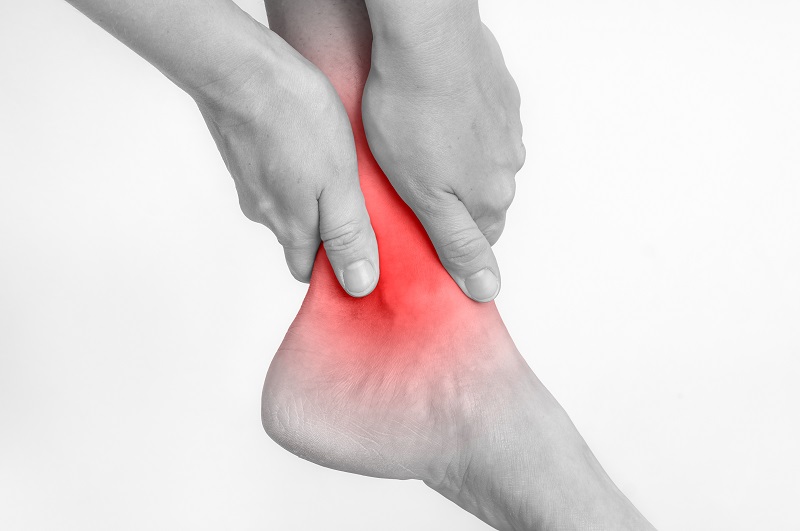Exercise and Fitness
Sprain vs Strain – What’s the Difference?
by Jeff Richards
When we suffer an injury, we usually hear the terms sprain and strains. But what do they mean? What’s the difference? Is there a difference?
How do they happen?
Sprains and strains happen when a joint or soft tissue is taken beyond their limit states, as explained by Impact Physio & Sports Clinic, causing the tissue to become overstretched and torn, causing damage.
This can happen with:
- Trauma and impact
- Forceful muscle contraction
- Not being warmed up and sudden movement applied to a muscle or joint
- Twists, Slips, Trips.
- Overuse of a muscle or joint
There are some of these things that we simply can’t do anything about, says Grimsby Heath & Wellness, such as unexpected trauma or impact. A good warm-up and physical preparation plan can reduce injury.
What can I do when they happen?
When you suffer an injury, such as a sprain or strain, you should get to work immediately on it, advises Intrinsi. You may have heard the letters PRICE – this is what they stand for:
P – Protection – Remove yourself from danger or the activity which caused it and discontinue exercise or anything that may be causing further harm.
R – Relative Rest – do not stop moving or exercising completely. If you have hurt your knee, hip or ankle – maybe reduce the amount of walking you are doing but find ways to move the affected body part regularly – this will help the tissues to heal and get blood to them
I – ice – get cold on the injury within 72 hours to reduce the damage caused and limit the bleed within the injury. This can make your injury less severe.
C – Compression of the injury – this helps to reduce bleed and reduce the swelling which can make it more painful and also delay recovery.
E – Elevate your injury above heart height to ensure the swelling drains efficiently.
If you are unsure about this or don’t know what you have done – get booked in for an assessment with an injury specialist to give you a recovery plan.
What is strain?
A strain is a muscular or tendon tissue injury, explains Okotoks Physical Therapy. It refers to the amount of fibres which have been strained in an injury.
Common examples of strains are hamstring, quads, and calf strains. The main part of the muscle will have suffered an injury causing it to tear, leading to pain and dysfunction.
Grade I (mild) strains affect only a limited number of fibres in the muscle. There is no decrease in strength and there is a fully active and passive range of motion. Pain and tenderness are often delayed to the next day.
Grade II (moderate) strains have nearly half of muscle fibres torn. Acute and significant pain is accompanied by swelling and a minor decrease in muscle strength.
Grade III (severe) strains represent the complete rupture of the muscle. This means either the tendon is separated from the muscle belly or the muscle belly is actually torn in 2 parts. Severe swelling and pain and a complete loss of function are characteristic of this type of strain.
Mild strain can recover quickly within 2 – 4 weeks, more serious ones can extend up to 3 months plus. This will vary, depending on which body part was affected.
What is a sprain?
A sprain is a ligament injury which involves trauma to the joint.
Ligaments hold bones to bones and typically occur with impact, twists, and over-extension injuries to body parts. Ankle inversion injuries, twisted knees, and hyperextension of the elbow are all common sprains.
Grade I – structural damage only on microscopic level, with slight local tenderness and without joint instability.
Grade II – partial tear (rupture) of the ligament, visible swelling and noticeable tenderness, but without joint instability (or with mild instability).
Grade III – a severe sprain: complete rupture of the ligament with significant swelling and with instability of the joint.
Mild sprain will recover in around 6 weeks – more serious sprains can take 3 months or more.
So we hope that helps to clarify what the difference between a sprain and strain is – seek specialist advice if you need help!
About the Author
Toronto native Jeff has always had a love for writing. He first found this love in high school when he wrote articles for his fellow peers in the school newspaper. Since then, Jeff has successfully published two books, the first of which was published shortly after receiving his master’s degree in literature. With plans to write another book, Jeff’s passion for storytelling still continues more and more every day.





One thought on “Sprain vs Strain – What’s the Difference?”
Comments are closed.